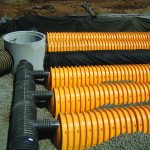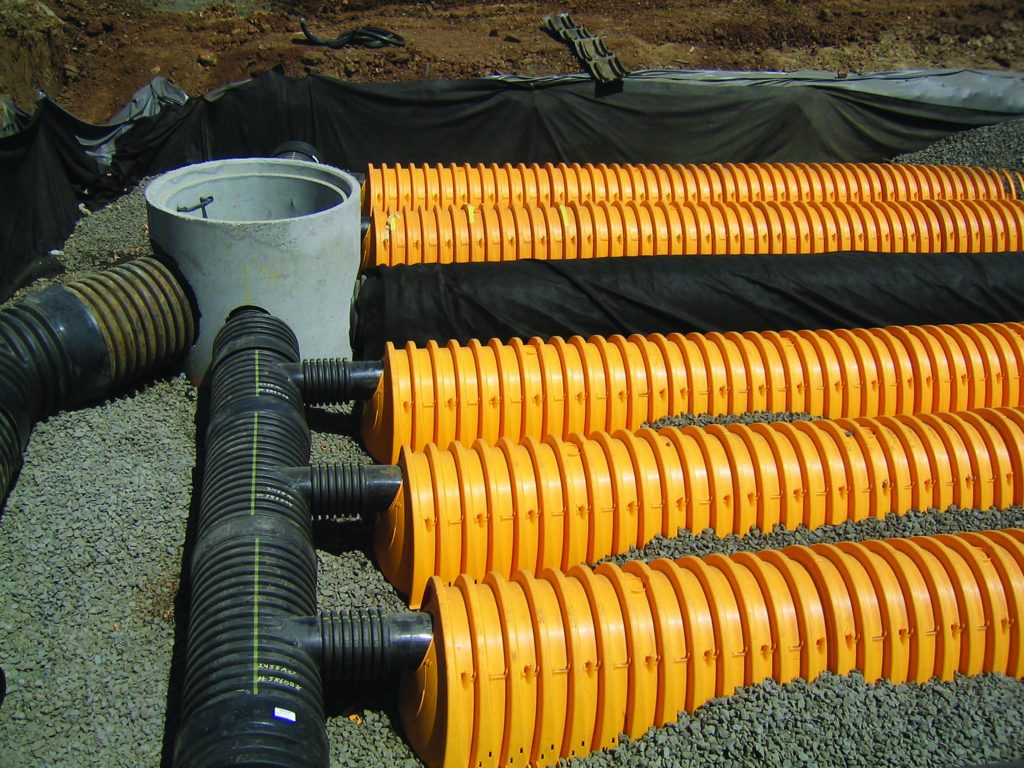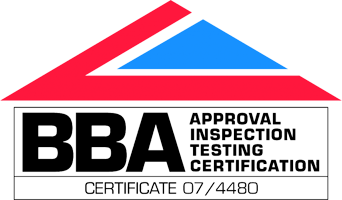Monthly Archives: September 2023

Designing for Water Quality Using Mitigation Indices
Now there are verified mitigation indices for engineered components says Stuart Crisp, UK manager at Advanced Drainage Systems (ADS).

The publication of the Plan for Water by the Department for Environment, Food & Rural Affairs (Defra) in April this year signalled the Government’s intention to tackle water pollution. Clearly, one of the ways to do this is by using a well-designed SuDS management train which considers both water quantity and quality, deploying SuDS components that are appropriate for the levels and types of pollution present in the surface water.
This is recognised in the Plan, with reference to Schedule 3 of the Flood and Water Management Act 2010, which will make adoption of SuDS for new developments mandatory. The Government had announced in January 2023 that Schedule 3 would be finally implemented in England, as it already has been in Wales, possibly coming into force in 2024, subject to consultation.
SuDS are often thought of as a way to manage water quantity by reducing flows into sewers and hence reducing activation of combined sewer overflows (CSOs) which discharge raw sewage into water bodies. SuDS should also be designed to manage water quality directly by removing pollutants where it is carried in surface water. The CIRIA SuDS Manual, C753, prescribes a risk-based approach, setting out the expected levels of pollution for different development types and then defining how natural and engineered SuDS elements, used as a single entity or together, can be used to remove the various forms of pollution.
When it comes to engineered SuDS components, designers and specifiers can turn to British Water, the body which represents water and wastewater companies. Having published a code of practice in 2016 and a ‘how to’ guide for manufactured stormwater treatment devices in 2022, the organisation is now hosting a list on its website of engineered SuDS components which have had their pollution treatment information verified by an independent third party expert. The ADS StormTech system, with its Isolator Row – a built-in water quality treatment device – has recently been added to British Water’s list of assessed surface water treatment devices.
Types of pollution
There are four main types of pollutant that can be found in stormwater run-off: sediments, metals, hydrocarbons and nutrients. Sediments, often referred to in pollution mitigation as total suspended solids (TSS), is particulate matter including particles of soil. Metals and metal compounds can be dissolved in run-off or attached to silts and sediments in the water. Copper and zinc, which are most commonly found in surface water in the UK, can damage plants in higher concentrations.
Hydrocarbon pollution comes with run-off from roads, car parks and areas where machines operate and are maintained, due to oil and fuel spills, tyre and brake wear. Changing climate means that rainfall events are further apart but more intense, leading to higher concentrations of pollutants, as they build up for longer before being washed away.
Nutrient pollution, usually nitrogen or phosphorous based, can come from sources such as run-off from agricultural land where fertiliser has been used or combined sewer outfalls, where wastewater and surface water are discharged into bodies of water. They can lead to algal blooms, which reduces oxygen in the water and can negatively impact on aquatic habitats.
Mitigation indices
The SuDS Manual’s method for dealing with water pollution risks starts by determining pollution hazard indices for the area under consideration. In Table 26.2, the manual provides pollution hazard indices for a range of land uses and for three types of pollution: TSS, metals and hydrocarbons. So, for example, for a busy public car park such as a supermarket or hospital, the index for TSS is 0.7, for metals is 0.6 and for hydrocarbons 0.7.

The next step is to identify a SuDS treatment train that can provide the necessary mitigation indices, either a single stage or using a combination of components. The manual has a table for that too, Table 26.3. However, this table only provides indices for natural SuDS components, stating that proprietary treatment systems must demonstrate that they can address each of the contaminant types to acceptable levels.
For engineered components, British Water’s two documents – Code of Practice for the Assessment of Manufactured Treatment Devices Designed to Treat Surface Run-off and ‘how to’ guide, Applying The CIRIA SuDS Manual (C753) Simple Index Approach To Proprietary/Manufactured Stormwater Treatment Devices – provide a methodology to calculate mitigation indices for TSS, metals and hydrocarbons.
The mitigation indices for ADS StormTech’s Isolator Row are 0.8 for TSS, 0.6 for metals and 0.7 for hydrocarbons = 0.7. This means that it meets the requirements for medium pollution hazard applications and the TSS requirements of high pollution hazard applications and can be used as a combined SuDS attenuation and water quality treatment system without the need for additional components within the treatment train.

Stuart Crisp is UK Manager for Advanced Drainage Systems (ADS). ADS is America’s largest manufacturer of thermoplastic corrugated drainage pipes and a specialist in water management systems. StormTech has a long and successful track record with over 50,000 below ground SuDS attenuation system installations using in excess of 3m units.
Originally published in Water magazine September 2023

SuDS for Water Quality
Designing SuDS to remove pollution from surface water requires a risk-based approach, matching likely levels of pollution with the performance of SuDS elements. Stuart Crisp, UK manager at Advanced Drainage Systems (ADS), reports.
Sustainable Urban Drainage Systems (SuDS) should be designed with both water quantity and water quality in mind. Yet often the water quality element is overlooked, or down-specified or removed altogether in a misnomered ‘value engineering’ exercise.
One of the challenges for designers is that the CIRIA SuDS Manual, C753, only defines the performance of natural SuDS components in the removal of pollutants. For engineered components, manufacturers must demonstrate that the component(s) selected will reduce the contaminant types to acceptable levels.
One way to do that is to check whether the manufactured component is on British Water’s list of assessed surface water treatment devices. To appear on the list, data relating to a component’s pollution treatment ability must have been verified by an independent expert.
Risk-based approach
The SuDS Manual prescribes a risk-based approach to designing for water quality, defining pollution risks by way of pollution hazard indices. In Table 26.2, the manual provides the indices for a range of land uses and for three types of pollution: total suspended solids (TSS) such as tiny soil particles, metals and hydrocarbons. For instance, a busy public car park such as a supermarket or hospital, would have indices of 0.7 for TSS, 0.6 for metals and 0.7 for hydrocarbons. The manual then provides generic mitigation indices for natural SuDS components for the three types of pollution in Table 26.3.
British Water, which represents water and wastewater companies, has published two documents which provide guidance on how to calculate mitigation indices for engineered SuDS components. In 2016 it published a Code of Practice for the Assessment of Manufactured Treatment Devices Designed to Treat Surface Run-off. And in 2022 it followed that up with a ‘how to’ guide, Applying The CIRIA SuDS Manual (C753) Simple Index Approach To Proprietary/Manufactured Stormwater Treatment Devices.
British Water’s ‘how to’ guide provides a method for calculating mitigation indices for TSS, metals and hydrocarbons based on test results derived from its code of practice. This means that manufacturers can calculate and publish mitigation indices for their treatment products so that they can be considered as part of a SuDS management train.
On its website, British Water provides a list of engineered SuDS components and their independently verified mitigation indices. ADS StormTech, with its Isolator Row, was recently added to the list, the only system that combines attenuation and pollution removal, often without the need to add a treatment device upstream of the attenuation chambers.
It should be noted that removal of TSS is also important from a water quantity perspective. Build-ups can reduce the storage and discharge capacity of a water storage element, whether natural or manufactured. How and when to remove sediment should be considered at the design stage and should also be part of a planned maintenance regime.

For more information on Advanced Drainage Systems, visit www.adspipe.co.uk.



